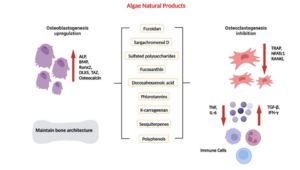Meadow Equine Turbo GT
1.Reducing Gastric Ulcers
Horses are very sensitive when it comes to their gastro-intestinal tract
(GIT). In the upper (proximal) part of the GIT, Equine gastric ulceration
syndrome (EGUS) is extremely common in sport horses, with prevalence rates
of approximately 90% described in both racehorses in training (Murray et al.,
1996) (Begg & Sullivan, 2003) and in advanced-level competition eventing
horses (Tamzali et al., 2011). Even in horses that are not involved in heavy
training or sport events EGUS has been reported by Lutherson et al. (2009) in
more than 50 % of the animals. Clinical signs of EGUS vary from horse to horse
but may include colic and poor body condition (ill-thrift) (Murray et al., 1989).
Intense training regimens and the associated high energy requirements
of performance horses dictate that modern management practices commonly
combine stabling, limited grazing, and reduced forage intake, along with meal
feeding of high-concentrate, low-fibre diets. Such management practices
deprive the horse of the buffering effects of a protective fibre mat and a nearly
continuous flow of bicarbonate-rich saliva.
Traditional treatment of EGUS is primarily with pharmacological agents
that either act as H2 blockers or as acid pump inhibitors (Andrews et al., 1999).
However, unique specially selected algae or seaweed-derived sources, have
unique molecular makeups and structures, which increases their ability to
function as pH reducing agents. The structure of Lithothamnium calcareum
further differentiates them from other mineral rich sources and is characterized
by a high surface area honeycomb-like structure that imparts increased
buffering capacity.
Specifically selected seaweeds may also have an effect on the mucus
production within the stomach. This mucus layer may protect the
gastrointestinal wall against inflammation (Liyanage et al., 2023).( Sinurat &
Rosmawaty , 2014)
2. Bone Mineralization
Mineralizing algae like Lithothamnium corallioides are promising
sources of extracts for promoting bone health (see figure 1) due to their
structural similarities and the presence of key minerals (Green et al., 2013).
Lithothamnium, a mineral supplement derived from L. corallioides, is found to
have beneficial effects on bone mineral density due to its high mineral content,
including calcium, zinc, and magnesium, and when vitamin D was included
with Lithothamnium treatment, in vitro mineralization was enhanced
compared to levels in osteoblast cultures treated with only Lithothamnium
(O’Gorman et al., 2012, Widaa et al., 2014). These findings suggest that
Lithothamnium has the potential to increase mineralization. Lithothamnium
treatment showed a slight increase in mineral/matrix ratio and hydroxyapatite
content in trabecular bone. In horses, Lithothamnium increased bone turnover
and levels of osteocalcin and type I collagen (Nielsen et al., 2010).

Figure 2. Biologically active phytoconstituents of algae and their effect on bone structure
(Siddiqui et al., 2024).
3. Prebiotic metabolites
Besides the direct effect on reducing Ulceration in the stomach of horses
the seaweeds in Meadow Turbo GT may have a positive effect on
Hyperglycaemia, insulin resistance, and hyperlipidaemia. In a study by
Shannon et al. (2021) these physiological parameters were significantly (p < 0.01)
reduced in varying animals and humans after 4 weeks of seaweed
administration (See figure 2.)

Figure 2. Proposed mechanisms for the effects of seaweed-derived bioactive
components on improving metabolic syndrome via regulating gut microbiome. (Zang et al.,
2023)
The aetiology of many leading global chronic disorders such as
inflammatory disease, immunodeficiency, metabolic syndrome and cancer has
been linked to dysbiosis of the gut. In vitro, animal, and human studies collated
in this review show that the consumption of seaweed components may have
the potential to beneficially modulate the microbiota of the mammalian gut.
Seaweed polysaccharides such as fucoidan, laminarin, alginate, ulvan and
porphyran have shown particular efficacy as modulators of the gut by acting as
prebiotics, which increase fibre fermenting gut bacterial numbers and the
production of short chain fatty acids (Moore-Colyer et al., 2014) (Chaucheyras et
al., 2022)
Sources
Andrews, F.M., Larson, C. Harris, P. Nutritional management of gastric
ulceration. Equine Veterinary Education 2017; p 45-55.
Begg L.M, and Sullivan C.B., The prevalence and distribution of gastric
ulceration in 345 racehorses. Australian Veterinary Journal 2008
Chaucheyras-Durand, F., Sacy, A. Karges, K., Apper, E.; Gastro-Intestinal
Microbiota in Equines and Its Role in Health and Disease: The Black Box Opens.
Microorganisms 2022, 10, p 2517-2550.
Green D.W., Padula M.P., Santos J., Chou J., Milthorpe B., Ben-Nissan B. A
therapeutic potential for marine skeletal proteins in Bone regeneration. Marine
Drugs, 2013 ; p 1203-1212
N. M. Liyanage N.M, D. P. Nagahawatta D.P., Thilina U. Jayawardena T.U., and
Jeon Y-J. The Role of Seaweed Polysaccharides in Gastrointestinal Health:
Protective Effect against Inf lammatory Bowel Disease. Life, 2023 ; p 1016-1042
N. Lutherson, N., Hou Nielsen K., Harris P., Parkin T.D.H., The prevalence and
anatomical distribution of equine gastric ulceration syndrome (EGUS) in 201
horses in Denmark. Equine veterinary Journal 2009 ; p 619-624
Moore-Colyer, M. , O’Gorman D.M, Wakefield K., Journal of Equine Veterinary
Science, 2014 , p 291-297.
Rabuffo T.S., Hackett E.S., Grenager N., Boston R.C., Orsini J.A. 2009 Gastric
ulceration in horses with colic. Journal of Equine Veterinary Science, 2009; p
540-546
Murray, M.J., Grodinsky C., Anderson C.W., Radue P.F., Schmidt G.R., Gastric
ulcers in horses: a comparison of endoscopic findings in horses with and
without clinical signs. Equine Veterinary journal 1989 ; p 68-72
Nielsen, B.D., Ryan C.E., and Cara I. O’Connor-Robison, C. I., A Marine Mineral
Supplement Alters Markers of Bone metabolism in yearling Arabians. Journal
of Equine Veterinary Science Vol 30, No 8., 2010. p 419-424.
O’Gorman D. M., Tierney CM, Brennan O, O’Brien FJ. 2012. The Marine derived,
Multi-mineral formula, Aquamin, Enhances Mineralisation of Osteoblast Cells
In Vitro. Phytotherapy Research ; p. 375–380
Rabuffo T.S., Hackett E.S., Grenager N., Boston R.C., Orsini J.A. 2009 Gastric
ulceration in horses with colic. Journal of Equine Veterinary Science, 2009; p
540-546
Siddiqui S.A., Srikanth S.P., Wu Y.S., Kalita, T.,. Different types of algae beneficial
for bone health in animals and in humans – A review. Algal Research 82, 2024.
P 1-18.
Shannon S.E., Conlon M., and Hayes M., Seaweed Components as Potential
Modulators of the Gut Microbiota. Marine Drugs, 2021 ; p 358-408.
Sinurat E., And Rosmawaty P. Evaluation of Fucoidan Bioactivity as Anti Gastric
Ulcers in Mice. Procedia Environmental Sciences. 2015 ; 407-411.
Tamzali Y , Marguet, C., Priymenko N., Liyazhri F., Prevalence of gastric ulcer
syndrome in high-level endurance horses. Equine Veterinary Journal, 2011. p
141-144
Widaa A., Brennan O., O’Gorman M., and O’Brien F.J., The Osteogenic Potential
of the Marine-Derived Multi-Mineral Formula Aquamin Is Enhanced by the
Presence of Vitamin D. Phytotherapy Research, 2013 ; p 678-684.
Zang L., Baharlooeian M., Terasawa M., Shimada Y., and Nishimura N.,.
Beneficial effects of seaweed-derived components on metabolic syndrome via
gut microbiota modulation. Frontiers In Nutrition, 2023. p 1-18.
